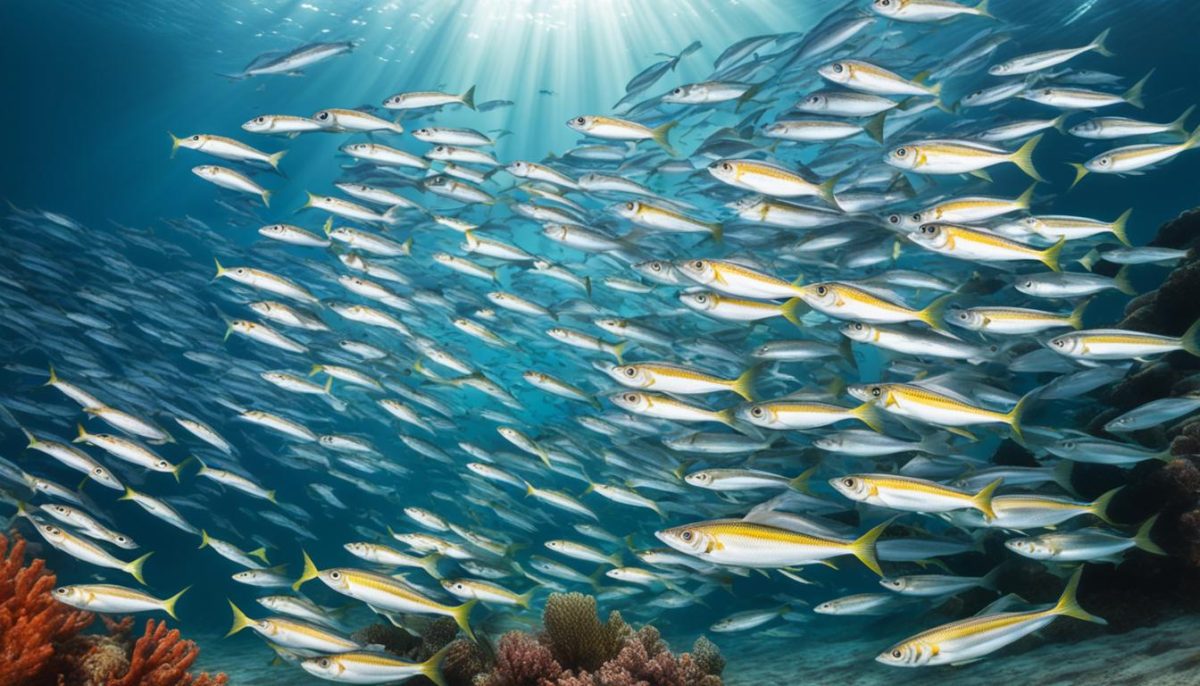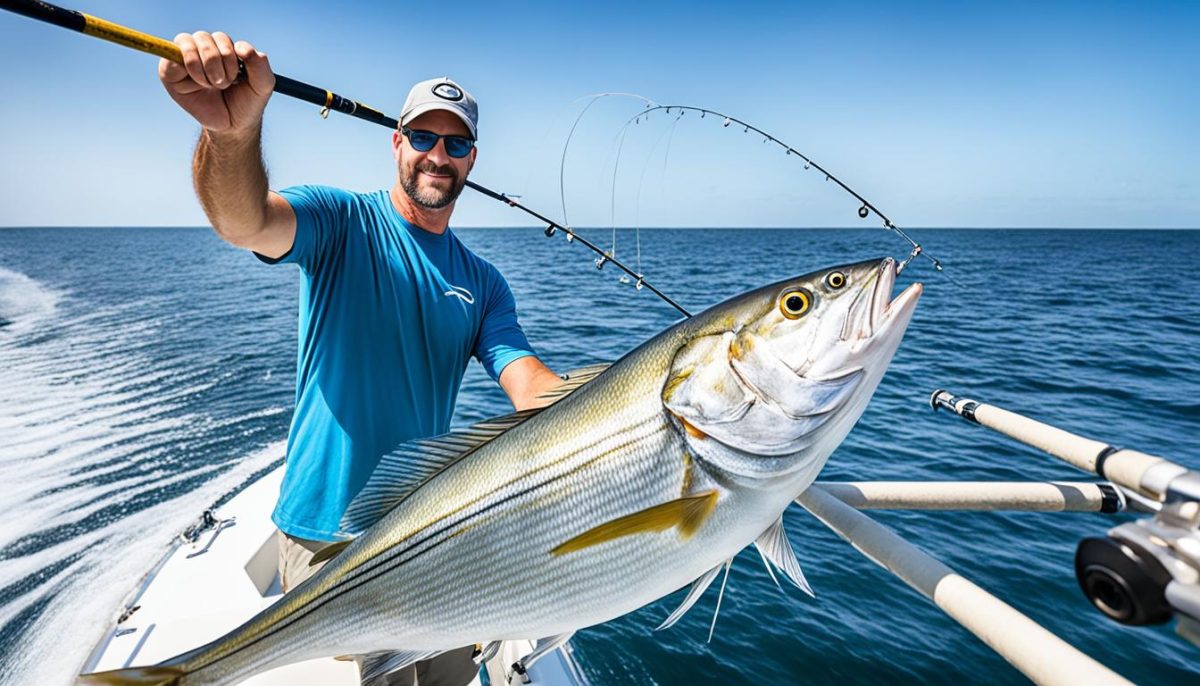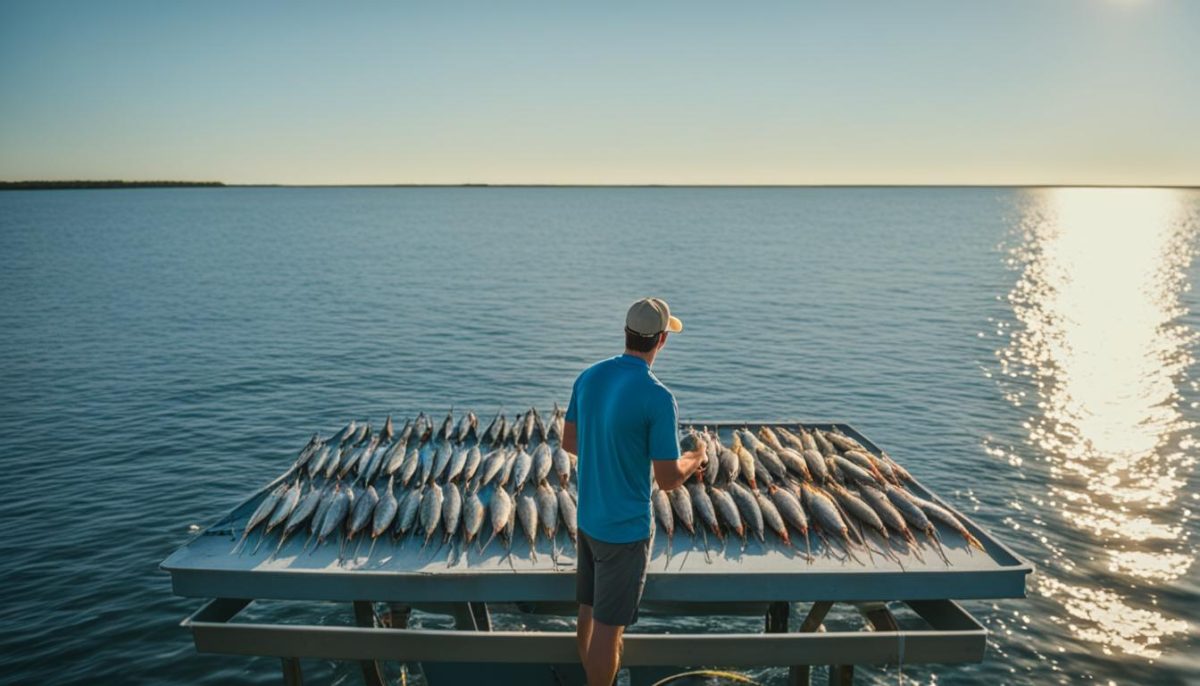Welcome to our comprehensive guide on fishing for Threadfin Herring. If you’re looking to improve your chances of catching these elusive fish, you’ve come to the right place! In this article, we will provide you with valuable fishing tips that will help you maximize your success on the water. Whether you’re a seasoned angler or a beginner, these expert tips will give you an edge in targeting Threadfin Herring.
Before diving into the specific techniques, it’s essential to understand the behavior and characteristics of Threadfin Herring. In the next section, we will explore their habits, preferred habitats, and physical attributes. This knowledge will guide you in selecting the appropriate fishing methods and increase your chances of a fruitful day on the water. Stay tuned for valuable insights on how to catch Threadfin Herring!
Understanding Threadfin Herring
To effectively catch Threadfin Herring, it’s crucial to have a solid understanding of their behavior and characteristics. By learning about their habits, preferred habitats, size, and physical traits, you can better tailor your fishing techniques to target this species successfully. Let’s take a closer look at these key aspects of Threadfin Herring.
Habit and Behavior
Threadfin Herring are known for their schooling behavior, often found in large groups near the surface of the water. They are highly migratory, moving between estuaries, coastal waters, and offshore habitats depending on the seasons and prey availability. These fish are also diurnal, meaning they are most active during daylight hours. Understanding their feeding patterns and preferred locations will significantly increase your chances of a successful catch.
Preferred Habitats
Threadfin Herring are commonly found in brackish or saltwater environments with sandy and muddy bottoms. They are often spotted near estuaries, river mouths, and inshore bays. These fish prefer areas with strong tidal flows that bring abundant food sources. Additionally, they are attracted to structures such as jetties, piers, and bridges, which provide shelter and create eddies where prey can accumulate.
Size and Physical Characteristics
On average, Threadfin Herring grow to a length of around 6 to 10 inches, although some individuals may reach up to 15 inches. They have slender bodies with a silver-blue coloration and a pronounced lateral line running along their sides. As their name suggests, Threadfin Herring have distinctive long and filamentous dorsal fins, which give them a unique appearance. By identifying their size and physical features, you can differentiate Threadfin Herring from other species in the water.
Having a comprehensive understanding of Threadfin Herring’s behavior and characteristics will serve as a solid foundation for your fishing techniques. This knowledge will help you select the right bait, choose the ideal fishing spot, and employ the most appropriate methods for attracting and catching these elusive fish.

| Behavior | Characteristics |
|---|---|
| Highly migratory | Slender bodies with silver-blue coloration |
| Schooling behavior | Pronounced lateral line |
| Diurnal | Distinctive long and filamentous dorsal fins |
| Prefer areas with strong tidal flows | Average length of 6 to 10 inches |
Best Fishing Techniques for Threadfin Herring
Now that you have a good understanding of Threadfin Herring, it’s time to explore the best fishing techniques that will help you catch this elusive species. Whether you’re a novice angler or an experienced enthusiast, these techniques will surely increase your chances of a successful catch.
1. Using Live Bait
One of the most effective methods for enticing Threadfin Herring is using live bait. Since Threadfin Herring are known to be voracious feeders, presenting them with a lively and enticing meal will trigger their predatory instincts. Consider using small shrimp, lively minnows, or small crabs as bait to attract these fish.

2. Employing Artificial Lures
Artificial lures can also be effective in enticing Threadfin Herring to strike. Use lures that resemble the natural prey of Threadfin Herring, such as small spoons, jigs, or soft plastic baits. Experiment with different colors and sizes to find which ones yield the best results in your fishing location.
3. Trolling
Trolling is another technique commonly used to catch Threadfin Herring. This method involves dragging a lure or baited line behind a moving boat. To effectively troll for Threadfin Herring, maintain a slow and steady speed while keeping an eye on your rod tip for any signs of bites.
4. Casting and Retrieving
Casting and retrieving is a versatile technique that can be highly effective when targeting Threadfin Herring. Choose a lightweight spinning rod and reel setup and cast your bait or lure towards areas where Threadfin Herring are likely to congregate, such as near underwater structures or vegetation. Retrieve your bait or lure at a steady pace to imitate the movement of natural prey.
5. Chumming
Chumming involves dispersing small particles of fish or fish scent into the water to attract Threadfin Herring. Use commercially available chumming products or create your own by grinding up small fish and releasing the particles into the water. This technique is particularly effective when fishing in shallow waters.
Remember, Threadfin Herring can be found in a variety of habitats and display different behaviors depending on factors such as location and time of year. Be sure to adapt your fishing techniques accordingly and remain patient. With practice and persistence, you’ll master the art of catching Threadfin Herring and experience the thrill of a successful catch.
Threadfin Herring: Tips for Success
When it comes to fishing for Threadfin Herring, expert advice can make a significant difference in your fishing success. By following these tips and incorporating them into your fishing routine, you’ll have a greater chance of filling your catch bucket with these prized fish.
One crucial factor to consider is the best time of day to fish for Threadfin Herring. These fish are known to be more active during specific periods, such as early morning or late afternoon. By timing your fishing trips accordingly, you’ll increase your chances of encountering a school of Threadfin Herring and experiencing a successful catch.
Additionally, understanding ideal weather conditions is essential for Threadfin Herring fishing. These fish prefer warmer water temperatures and are often found in areas with plenty of sunlight. Pay attention to weather forecasts and plan your fishing trips on days when the weather is favorable. This will enhance your chances of finding Threadfin Herring and maximizing your fishing success.
Lastly, knowing how to effectively locate schools of Threadfin Herring is key. These fish are known to gather in specific areas, such as around structure or near feeding grounds. Keep an eye out for diving birds or baitfish activity, as they often indicate the presence of Threadfin Herring. Additionally, using fish finders or other sonar equipment can help you pinpoint their location and optimize your fishing strategy.

